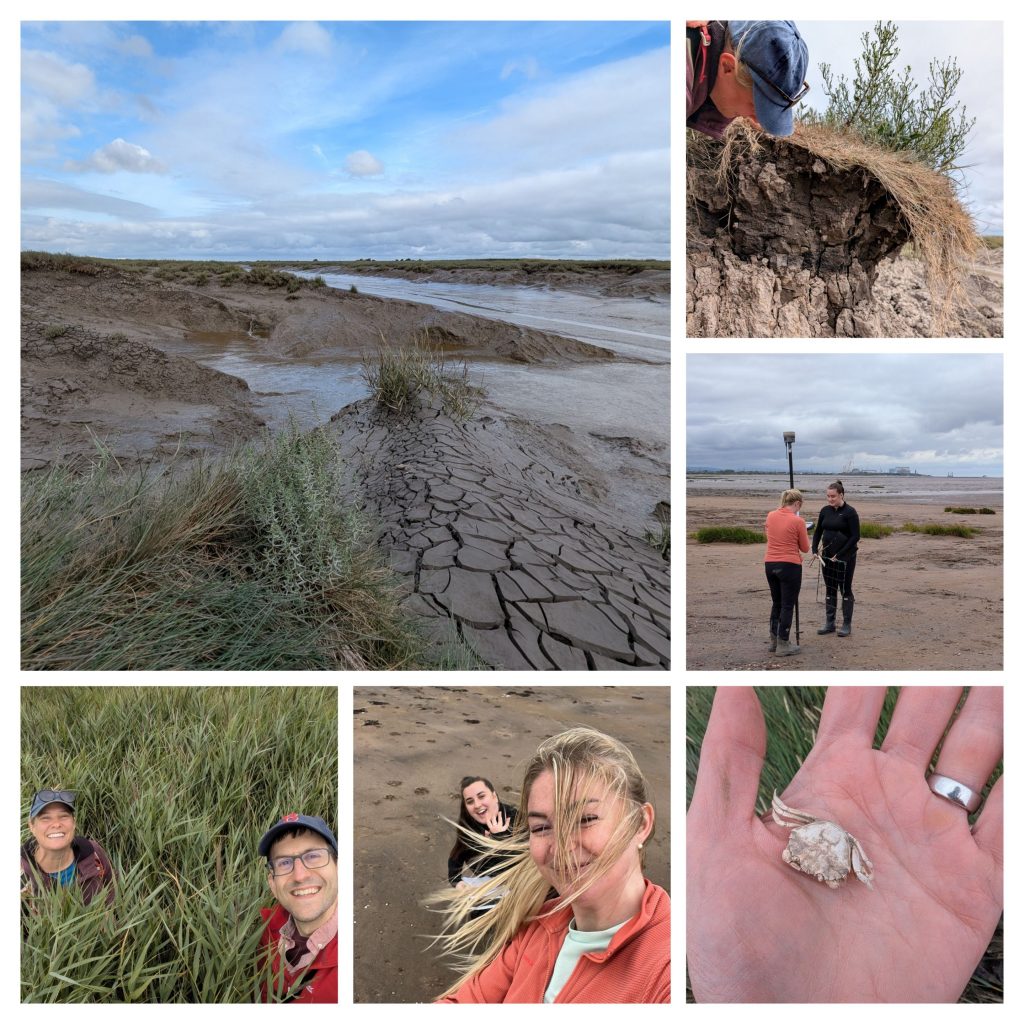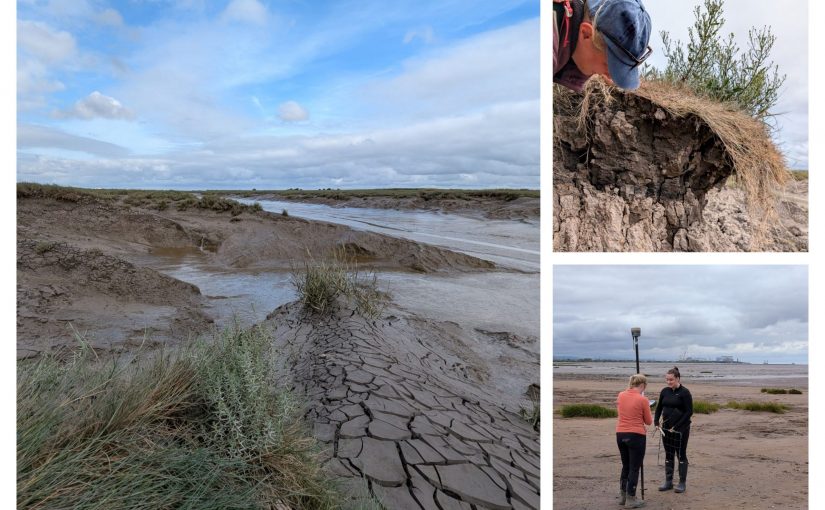Rob presented our investigation into various organic carbon analysis protocols at the Manchester Museum. If you are interested in measuring the carbon content of a sediment, take a look at the Standard Operating Procedures page – protocols 007 and 008 give both accurate and precise results using an elemental analyser.
Category: News and Views
Steart Vegetation Survey 2025
Members of the team visited WWT Steart Marshes, carrying out a vegetation census, geomorphology assessments, invertebrate surveys, and long-term landscape monitoring.

Sharing our Standard Operating Procedures
A lot of science is like baking – you follow a procedure (recipe) and generate a batch of data (cake). If the same sample is analysed following the same procedure in two different laboratries, the data generated should be the same. This is not always the case, but standardising the approach across a research community reduces the scope for variability between datasets and allows for comparison between studies.
In a lot of cases, protocols are generated by carefully reading the methods section of a published paper, but publications are often written very concisely and some of the steps taken in the lab could be left out or hard to follow. The step-by-step protocol is less likely to be published, but could be much more useful for those trying to build upon published studies.
To avoid that confusion, I have created a new section of the website dedicated to publishing the latest version of our laboratory standard operating procedures. These are published under a Creative Commons CC-BY 4.0 license so you are allowed – encouraged in fact – to use, adapt, improve and share these protocols.
I also welcome feedback regarding the protocols. Comments are enabled on each one and you are welcome to highlight steps that are unclear or could be improved.
